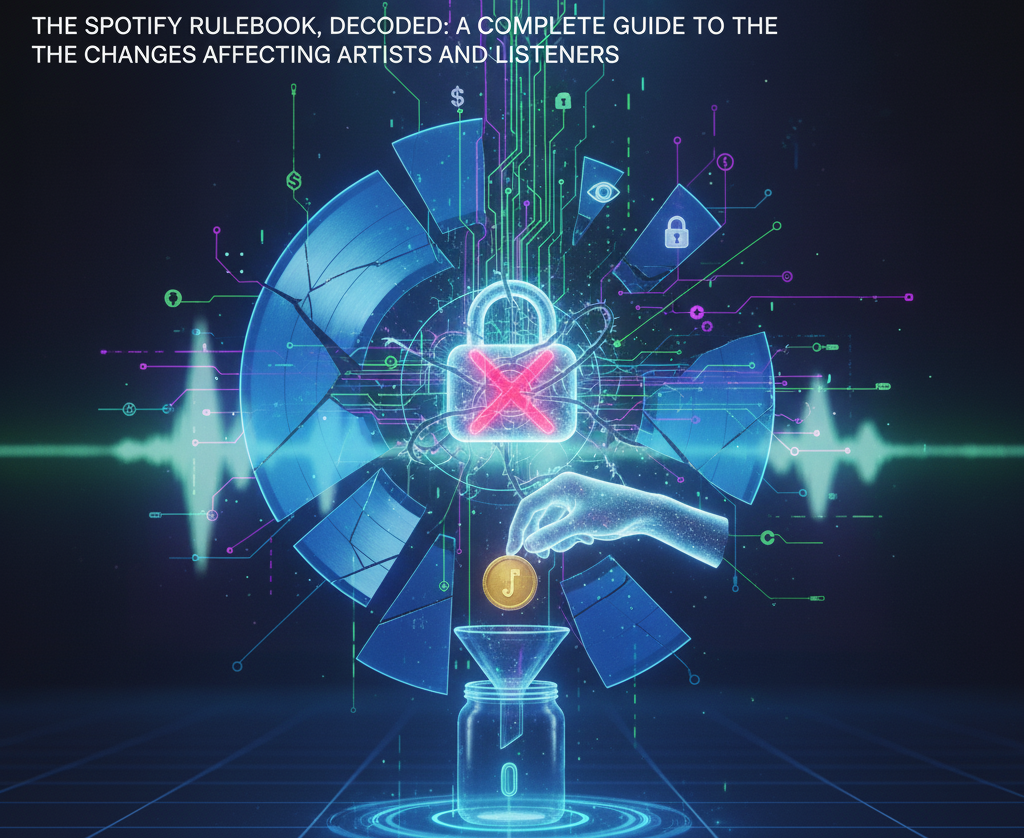In the endless churn of the digital music landscape, it can be nearly impossible to separate industry gossip from ground-level reality. Spotify, the ever-present titan of streaming, is constantly refining its platform, but the official changes are often buried in dense legal updates and confusing press releases. The result? A whirlwind of rumors about what’s changing for artists, how our data is being used, and who truly profits.
Consider this your source of truth. We’ve cut through the noise to bring you a definitive guide to the verifiable, already-implemented changes to Spotify’s playbook. From a seismic shift in how royalties are paid to the stark realities of its AI ambitions, this is what you actually need to know.
The New Economics: Deconstructing Spotify’s Royalty Overhaul
In early 2024, Spotify initiated one of its most aggressive overhauls of the streaming economy to date. The company framed these moves as a way to combat fraud and better support “working artists.” In practice, it established a series of new financial gatekeepers and penalties that have fundamentally altered who gets paid and for what.
The 1,000-Stream Gatekeeper
The most significant change is the establishment of a new payment threshold: for a track to generate royalties, it must now have a minimum of 1,000 streams within a 12-month period. This policy effectively demonetizes a massive swath of Spotify’s catalog—tens of millions of tracks that previously earned fractions of a cent will now earn nothing.
The stated goal is to stop the royalty pool from being diluted by a near-infinite number of tracks with negligible engagement, allowing those funds to be redirected to artists with more established listenership. For emerging artists gaining traction, this could mean a slightly bigger piece of the pie. But for DIY musicians, experimental artists, or those in hyper-niche genres, it represents a new barrier to entry, turning the first 999 streams into unpaid labor.

The War on Fraud Gets Expensive
For years, artificial streaming has been a ghost in the machine, siphoning money from legitimate artists through the use of bots and stream farms. Spotify’s new approach is to make fraud a direct liability. The platform now issues direct financial penalties to music distributors and labels when significant fraudulent activity is detected on their content.
This is a crucial shift in accountability. Instead of just removing fraudulent streams, Spotify is making it costly for the industry partners who upload the music. This pressures distributors to better vet their clients and actively police their own catalogs, moving the burden of enforcement partially onto the music industry itself.
Silencing the “Noise” Economy 
A particularly clever loophole in the old system involved uploading short, “functional” audio tracks—white noise, rain sounds, ambient tones—that could rack up millions of plays from sleep playlists and focus apps. It was a low-effort way to game the pro-rata system.
Spotify has targeted this cottage industry with a two-pronged attack. First, the minimum length for these “noise” tracks to be royalty-eligible was increased to two minutes. Second, the platform announced that streams for this category of content would be valued at a fraction of a music stream. Together, these rules effectively dismantle the business model for functional noise tracks, ensuring the royalty pool is reserved for what Spotify deems to be legitimate musical artistry.
The Double-Edged Sword of AI
Spotify’s strategy around artificial intelligence is both defensive and deeply integrated into its user experience. The company is simultaneously protecting its data from outsiders while using that same data to build its own powerful AI tools.
Building the Walled Garden
In a clear strategic move to protect its most valuable asset—its data—Spotify’s User Guidelines now explicitly prohibit scraping or crawling its service to train third-party AI models. This isn’t just about preventing copyright infringement; it’s about cornering the market. By legally walling off its garden of user data and licensed music, Spotify is preventing competitors from using its platform to develop their own rival music discovery AIs.

You Are the Algorithm
While the door is closed to outsiders, it’s wide open for Spotify itself. The company’s privacy policy is unambiguous: it uses your personal data to train its own machine learning models. Every action you take is a data point. A skip, a like, a share, a repeat listen, and even a voice command directed at the AI DJ are all fed into the system.
This is the engine that powers Spotify’s celebrated personalization. But it’s also a reminder of the fundamental transaction taking place: in exchange for access and discovery, the listening habits of millions of users become the raw material for the platform’s proprietary technology and future growth.
The Fine Print: You’re a Creator for Spotify, Too
Finally, a detail buried in the Terms of Use reveals a crucial aspect of the user-platform relationship. Many don’t think of themselves as “creators” on Spotify, but if you’ve ever made a public playlist, you are.
When you upload User Content—that custom playlist cover you designed, the carefully crafted title for your summer mix, or a witty description—you grant Spotify a broad, worldwide, royalty-free, and irrevocable license to use it. In simple terms, this means Spotify can take your content, use it however it wants (including in its own marketing), modify it, and display it, all without paying you or even asking for permission again. It’s a stark clarification of the power dynamic, confirming that user creativity is another resource that fuels the platform’s ecosystem.
In the ever-shifting world of music streaming, understanding the rules of the game isn’t just for industry insiders anymore—it’s essential for every artist and listener. This is the playbook as it stands today.
Your next read:
How to Mix Vocals for Streaming Platforms: Expert Tips from Top Engineers
